“Russian Doll” Costume Designer Jennifer Rogien Travels Through Time in Style in Season 2
During Russian Doll’s first season, hapless downtown New Yorker Nadia (Natasha Lyonne) can’t escape her own birthday party. In Season 2, she finds herself trapped by missing laws of space and time yet again, except now she’s a full-on time traveler. Stepping onto the 6 train, she gets off in her own neighborhood in 1982, where, she is understandably disconcerted to learn that she is her mother, Nora (Chloe Sevigny). Just as she gets used to firsthand insight into Nora’s crappy relationships and pregnancy with her own self, Nadia’s next subway ride disembarks much farther down the matrilineal line, to the mid-war Budapest of her grandmother Vera’s early twenties.
Meanwhile, Natasha’s partner in unwittingly defying the space-time conundrum, Alan (Charlie Barnett) gets on the subway and becomes his grandmother, Agnes (Carolyn Michelle Smith), a college student in the early 1960s East Berlin. Both Charlie and Nadia figure out they’re being sent back to solve longstanding family mysteries, with Nadia, first as Nora, then a young Vera, using her forays into her mother’s and grandmother’s lives to try to recover her family’s fortune, a set of Hungarian heirlooms somehow converted to thousands of dollars worth of Krugerrands lost by a dissolute Nora. Along the way, Nadia also tries to further improve the course of history by getting young Ruth (Annie Murphy), her mother’s best friend, to give up smoking, and she gives birth to herself on a subway platform.
The costume design by Jennifer Rogien does a ton of work here, shepherding what’s otherwise been a very modern show into the realm of a multi-period piece. Rogien’s costumes, which are deliberately muted in terms of color, with silhouettes true to time and place, work with their environments to evoke a niche moment in downtown New York history, the middle of World War II-era Europe, and the unusual environment that would have been East Berlin right after the Wall went up. We spoke with Rogien about her first impressions going in, tying different eras together through color, and bringing the season to a head in the last episode’s cathartic final scene.
What was your first thought when you initially read the script for season 2?
It was sort of massively overwhelming knowing what we were about to undertake in terms of five time periods, all of our known characters, all of our new characters, and an international unit. It was a little bit of a wow, this is going to be epic.
Did you start in a particular location/time period and build out from there, or look at these disparate settings as their own silos?
It was more by character. Everything is so schedule-driven in episodic production that I started with all the notes — so Nadia, Maxine, Lizzy, Ruth — because we knew we’d be starting with our contemporary characters from a scheduling standpoint and from a story standpoint. The introduction of episode one is when we see everyone again, except for Alan. From there, it was more about working in the order of the schedule. I believe we were starting with the 80s first. So it was this parallel process of the known entities and then the 80s. You’re never able to do one thing at a time. But for the most part, my shop actually looked like an 80s period piece, because that’s where we spent a lot of time in all of the episodes. As we started shooting and including scheduled elements like the 40s or 60s, then we’d start to pull those groups and characters and stock pieces in.
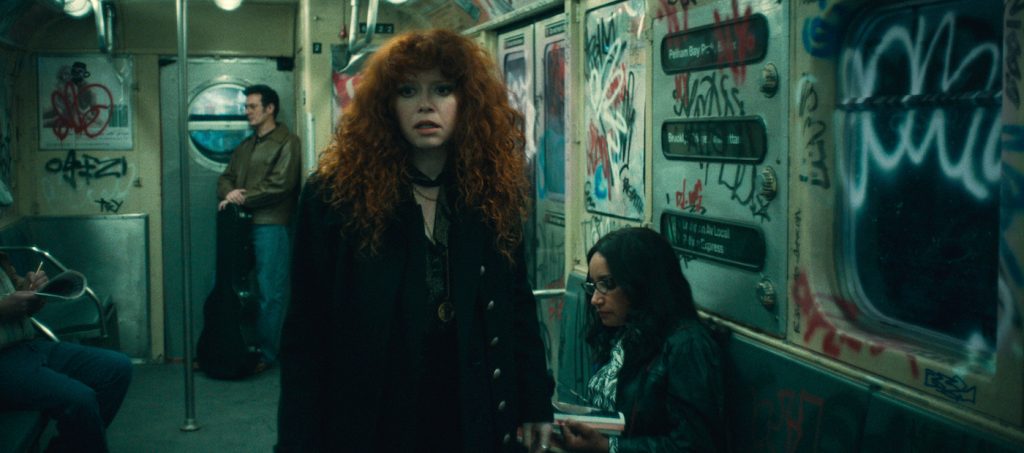
Were there ways you tried to tie Nadia to the younger versions of her mother and grandmother through clothing?
Definitely a little bit of thinking about that, and a lot of thinking about the color palette. Because at the production level, not just with costumes, we had color palettes for each era. For the 80s there was a bit of desaturated version of our contemporary color palette. There was another version that would take us back into the 60s. With Nadia, her color palette is very well established — black, red, white, gray, that’s it. So there isn’t much of a color palette overlap with Nora, because we’d seen Nora before, with her color palette established more in the 80s. So it was more of a language of color and tone than drawing exact parallels through costume. The krugerrand is one of the few things that is an exact parallel that is a deep part of the story. We see Nadia wear it, we see Nora wear it, we see Vera give it to Nora. That’s the real specific through-line in terms of costume.
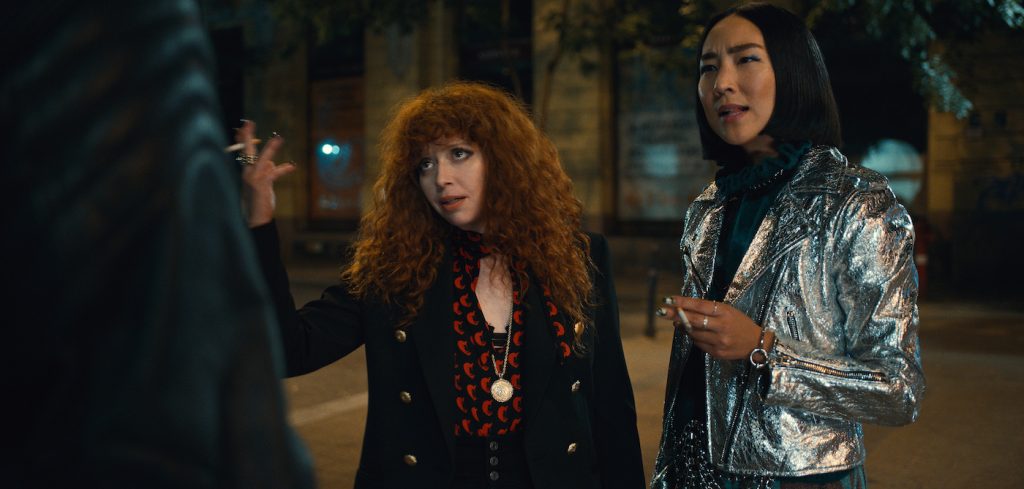
Were there colors in any era you avoided completely?
In our contemporary world, we still followed our rule of minimizing blue and green. That was something we’d set up in Season 1, to help our world feel a bit skewed. Blue is the most common color anywhere in the world, between sky and water, so taking that out of the color palette really tilts things a bit. That’s something we leveraged in Season 1 with the exception of Maxine, who’s a notable rule breaker. And Nora was in a lot of blue in Season 1 as well to help reflect that she wasn’t in our contemporary world. But in terms of the palette for this season, that was something that Natasha, Diane Lederman, our production designer, and I all talked about more globally. I tried very hard to make sure the costume color palette matched overall what we were doing with the production.
Did you have set rules for establishing the different period costumes?
One of the things we talked a lot about was that we definitely didn’t want to do 1980s businesswear in New York. We wanted to do the Lower East Side in 1980s New York, which is a very different vibe than what you see in a lot of catalogs. The research materials you can get for the fashion of the era is a lot of J.C. Penny and Sears catalogs and Vogue, which is actually not relevant to the snow-globe that is the Lower East Side and Tompkins Square Park in Russian Doll. One of the things we tried really hard not to do was the 80s iconic yuppie vibe that we see a lot in movies because it’s really fun, the shoulders are strong, everything is oversized, and the neons are bright, but that was not us at all. We actually tried very hard to stay gritty, stay New York, and even step it back to the late 70s. You even see that in Nora’s wardrobe. It’s actually 1982 in the story, which tends to look more like the late 70s. So there weren’t really hard and fast rules, but it was things that were right for our story and our setting.
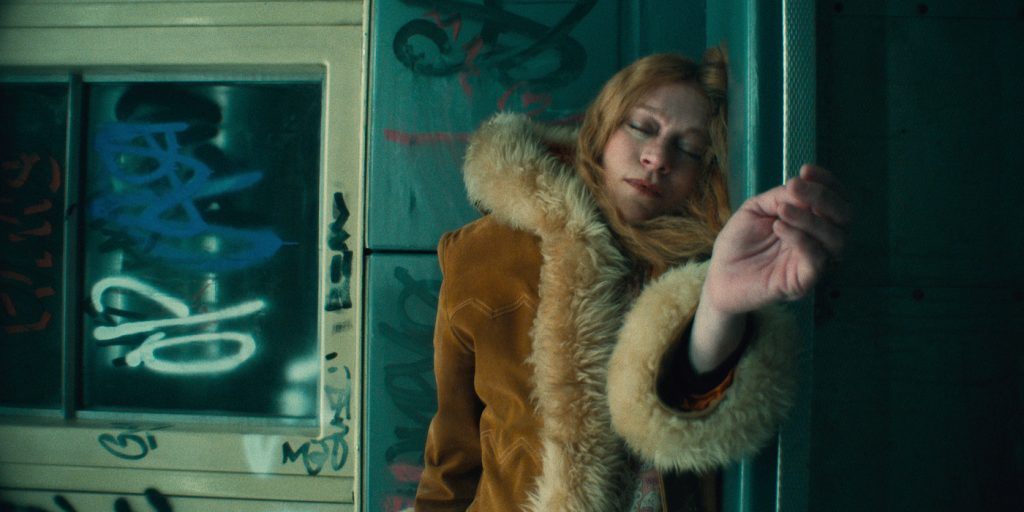
How did the early 60s in East Berlin and post-war Budapest come together — tons of research?
Absolutely. A lot of research specifically to Alan’s grandmother’s storyline. She’s in university and she’s from Ghana. We talked a lot about whether she had completely westernized to blend into her surroundings, and we ended up making the choice that she’s really invested in her education and is really trying to move forward in her life. We did some rentals but we also found some great tiny vintage shops in and around the Lower East Side that had some 60s pieces. It was really a search to find things that worked for her character, storyline, time period, and color palette. There’s also an amazing vintage supplier out of Chicago who has amazing 60s pieces, including coats and hats. Then for the 40s, that was primarily rental houses. We did shoot a lot of the 40s in Budapest, so I partnered with my local team to work with Paris Costumes, which is one of the big costume rental places in Europe, and we pulled from their local Hungarian place and had some costumes shipped in. The uniforms were actually sourced with an expert who is in Budapest who specializes in European uniforms for the early 1900s. The amount of expertise was absolutely incredible. Laszlo and his team helped us not only with the research, but he then maintains and recreates historically accurate uniforms. He’s also Hungarian, so he knows that history insanely well. His team also came and helped us dress all of the extras and actors on the day.
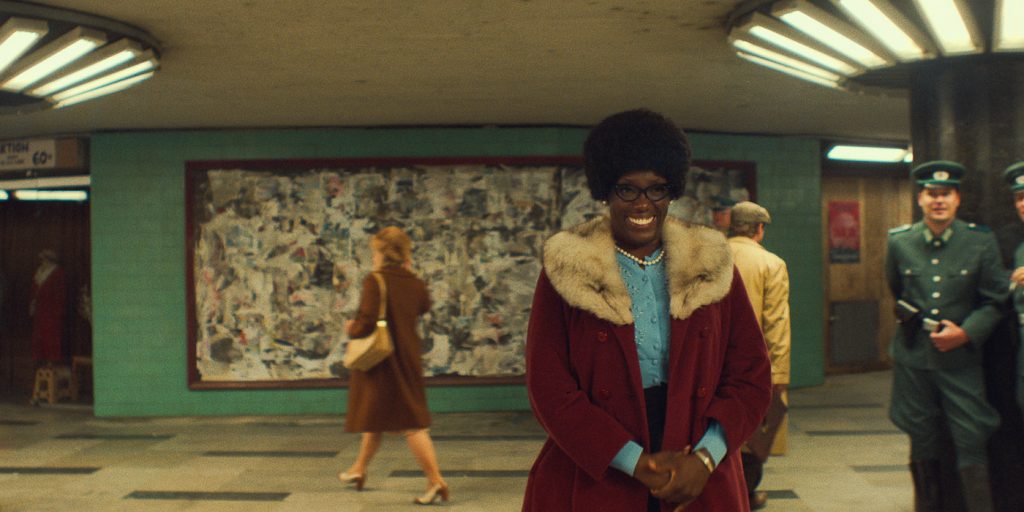
That final moment, when everyone is paired with her younger self on the subway, must have been highly orchestrated, visually speaking.
Natasha and I talked a lot about that scene because of those parallels. Some of the costumes fell into place naturally. We knew that young Vera, Nadia’s grandmother, would be wearing a specific dress because she’s pretending to be in mourning during the war to evade the authorities, and so that one was set from the beginning. It was going to be a black dress with a hat with a veil. We made the dress based on a 1940s sample that we rented. As we were fitting young Ruth and Elizabeth [Ashley] as present-day Ruth, we started talking about what’s the most important factor here — is it between the two younger-older selves, or is it the point in the story when Nadia remembers this character? It’s actually most salient that Ruth is in the last thing that Nadia sees her in, which is the hospital gown. We talked a lot about it and the significance of those clothes and the moment Nadia sees these various women in her life because it’s all in Nadia’s imagination.
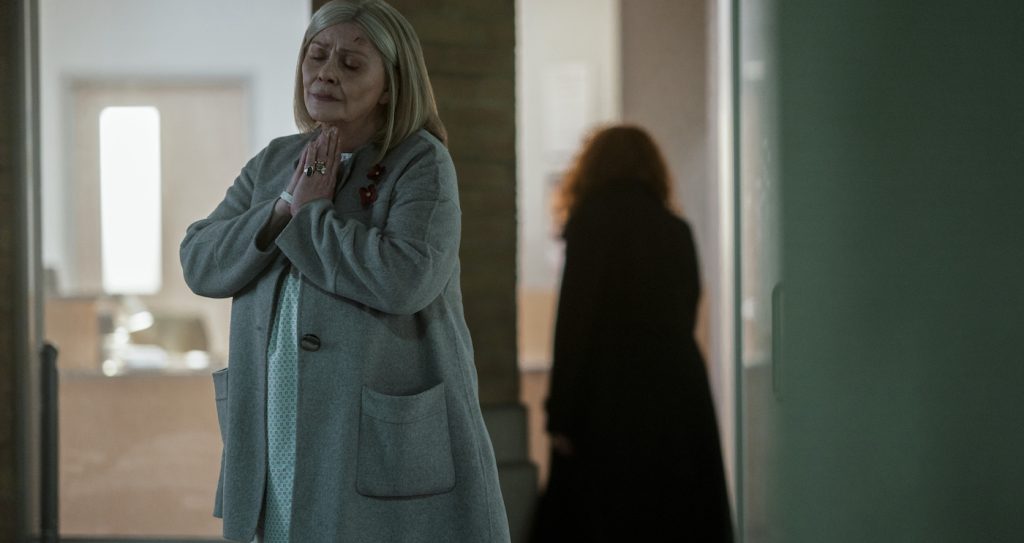
For more on big titles on Netflix, check these out:
“The Umbrella Academy” Season 3 Trailer Reveals a Brand New Battle
“Stranger Things” Season 4 Will Have Two Feature-Length Episodes
Featured image: Russian Doll. Natasha Lyonne as Nadia Vulvokov in episode 201 of Russian Doll. Cr. Vanessa Clifton/Netflix © 2022



